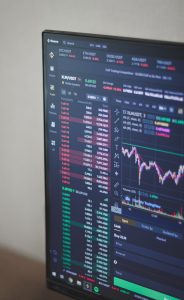Forex trading can be a highly rewarding activity, but it requires a well-defined strategy in order to succeed. A forex strategy is a set of rules and guidelines that a trader uses to make decisions about when to enter and exit trades. While there are many pre-made strategies available, creating your own forex strategy can be a valuable tool in achieving success.
In this article, we will discuss the steps necessary to create your own forex strategy.
Step 1: Define Your Trading Goals
The first step in creating your own forex strategy is to define your trading goals. This will help you determine the type of trader you want to be and the trading style that will best suit your goals. Some traders may want to focus on short-term gains, while others may be more interested in long-term investments.
It is important to have a clear understanding of your goals before creating a forex strategy. This will help you determine the level of risk you are willing to take and the type of trades you will need to make to achieve your goals.
Step 2: Analyze the Market
Once you have defined your trading goals, the next step is to analyze the market. This involves researching the market trends and identifying potential trading opportunities.
There are two main types of analysis that traders use: technical analysis and fundamental analysis. Technical analysis involves using charts and technical indicators to analyze the market trends. Fundamental analysis involves analyzing economic and financial data to determine the underlying factors that are driving the market.
It is important to use a combination of both types of analysis in order to gain a comprehensive understanding of the market.
Step 3: Develop Your Trading Plan
The next step is to develop your trading plan. This involves creating a set of rules and guidelines that you will use to make decisions about when to enter and exit trades.
Your trading plan should include the following:
– Entry and exit points: This includes the price at which you will enter and exit trades.
– Stop-loss levels: This is the level at which you will exit a trade to limit your losses.
– Take-profit levels: This is the level at which you will exit a trade to take your profits.
– Risk management: This includes the level of risk you are willing to take and the amount of capital you are willing to risk on each trade.
Step 4: Backtest Your Strategy
Once you have developed your trading plan, the next step is to backtest your strategy. Backtesting involves using historical data to test your strategy and determine its effectiveness.
Backtesting your strategy can help you identify any weaknesses and make necessary adjustments before committing real money to the market.
Step 5: Monitor and Adjust Your Strategy
The final step is to monitor and adjust your strategy as needed. This involves keeping track of your trades and analyzing their performance.
If your strategy is not performing as expected, you may need to make adjustments to your trading plan. This may involve tweaking your entry and exit points or adjusting your risk management strategy.
Conclusion
Creating your own forex strategy can be a valuable tool in achieving success in the market. By defining your trading goals, analyzing the market, developing a trading plan, backtesting your strategy, and monitoring and adjusting as needed, you can develop a strategy that is tailored to your individual needs and goals. Remember, consistency and discipline are key to maintaining a successful forex trading strategy.





